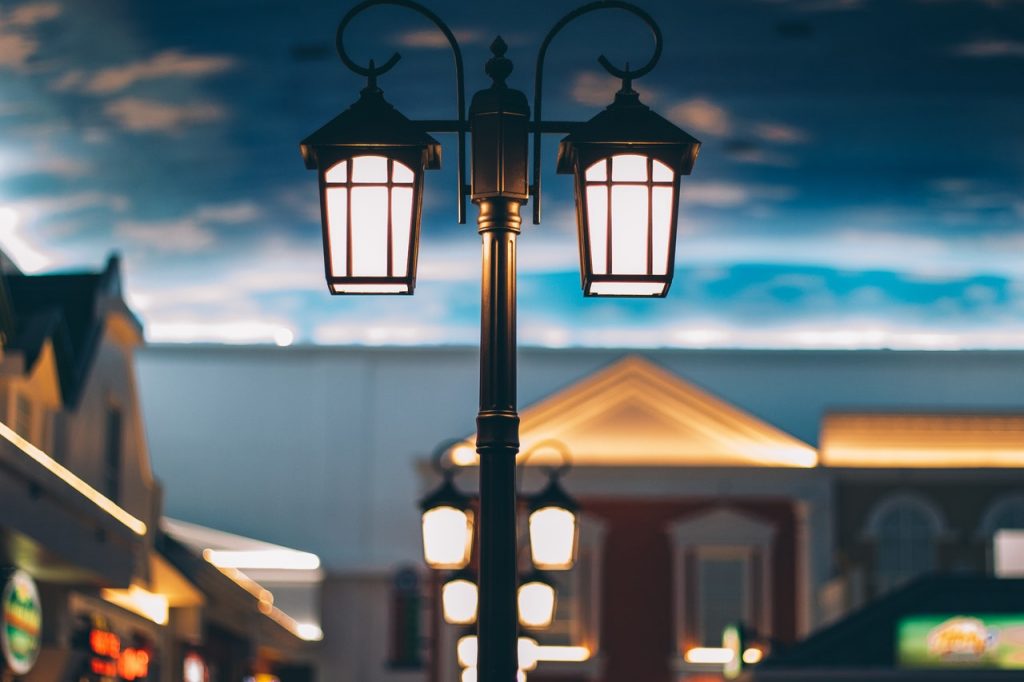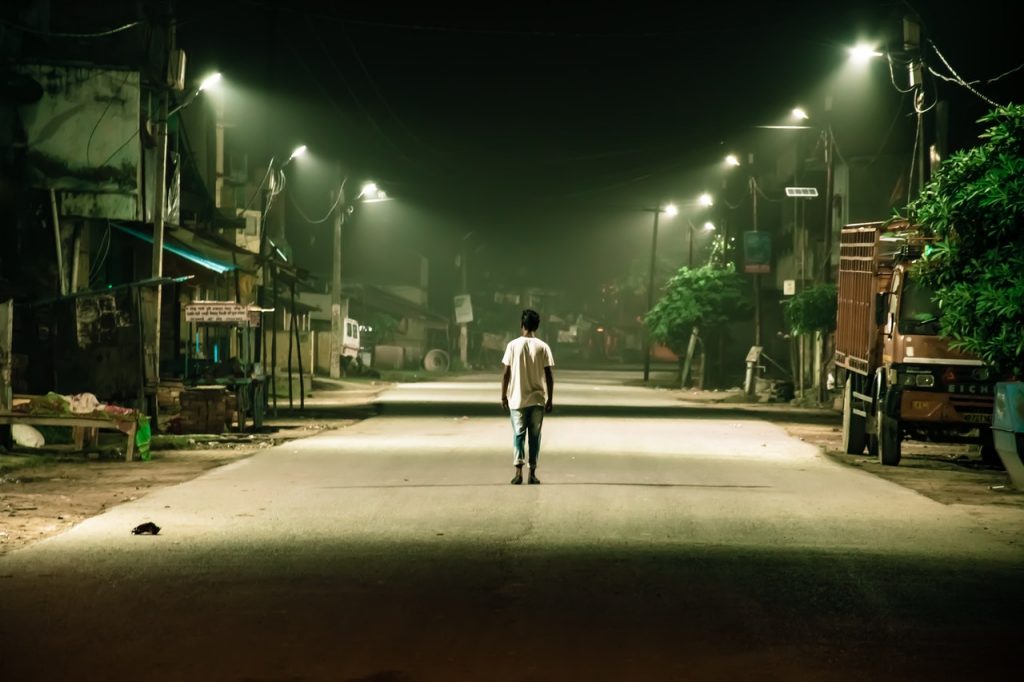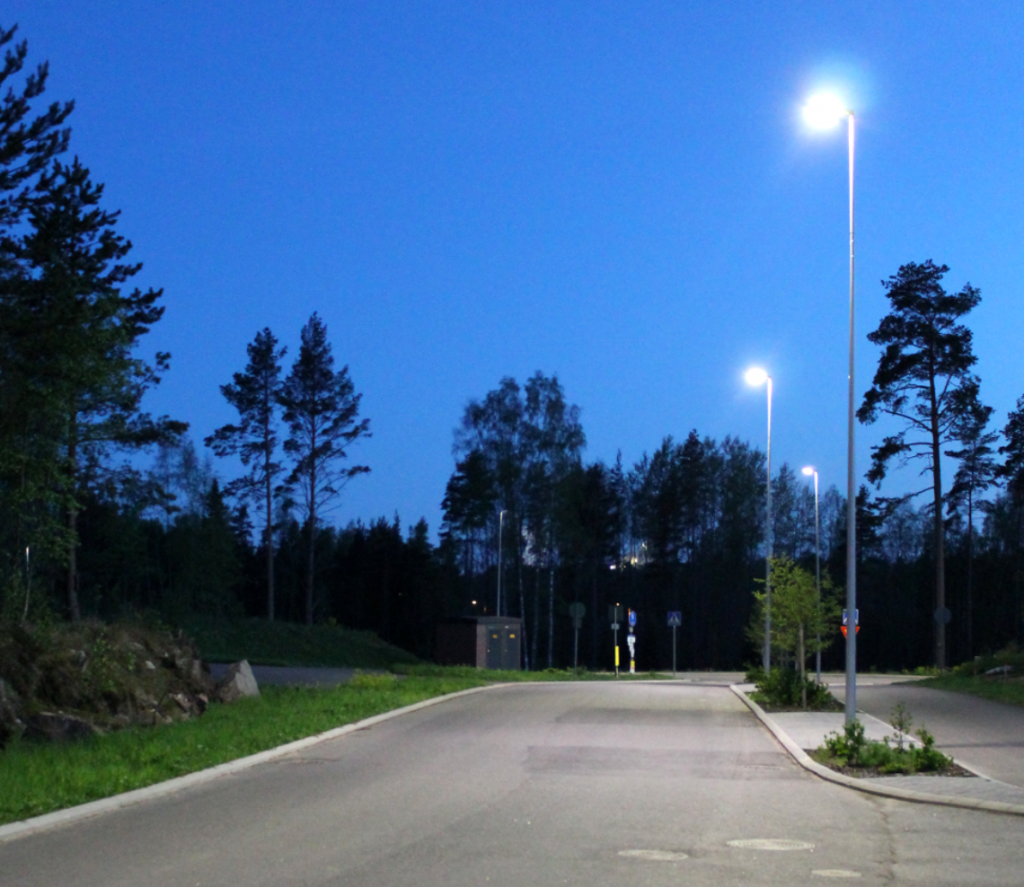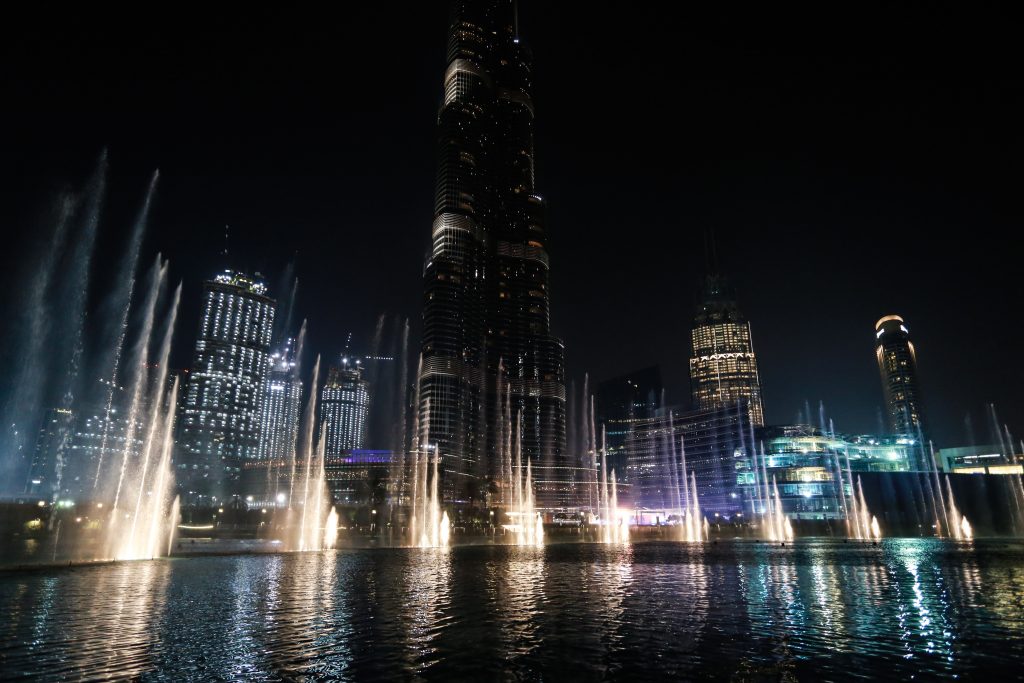Introduction
In recent years, China has advocated the excavation and promotion of local culture and local characteristics at the national level, as well as the protection of traditional Chinese blocks. This article takes Tianjin’s ancient culture street night scene improvement project as an example to discuss how to use the night scene lighting design camp to highlight the historical and cultural atmosphere of traditional Chinese blocks.
At the same time, combining the use functions of commercial blocks to create night landscape nodes with different experiences, driving the vitality of the region and inheriting local culture. By studying the different cultural backgrounds and functional characteristics of important nodes such as commercial main street, Tianhou Palace, and stage plaza, using different lighting methods, appropriate lamp selection, and lighting color and illuminance control to create historical atmosphere and theme artistic conception.
Lighting Technology
(1) Sight analysis
Analyze the traffic flow and the line of sight relationship in the block. Analyze from several aspects: entrance viewpoint, distant viewpoint and pedestrian sightseeing viewpoint. Clarify the priority and light-dark relationship of the overall block structure, and determine the light color, illuminance and lighting method of the light.
(2) Choice of lighting color
There are roughly two types of light color choices for modern art lighting. The first is the nightly reproduction and restoration of the body color. The second is to give it new colors to express a certain emotion or imaginary environment.
Most of the architectural lighting in the ancient culture street is mainly to better show the architectural details and body colors. Choose warm yellow as the main color. Depending on the building form, white and warm white can be used appropriately. At the same time, combining with the creation of a commercial atmosphere can also appropriately embellish “China Red” to highlight the vigorous atmosphere of the ancient cultural street. In the design of special nodes, the lighting color is mainly controlled by combining the theme to be expressed and the atmosphere of the scene.
(3) Control of light illuminance
Based on block structure and function analysis. The building facing the main street is the most prominent linear space with the most people flow. The illuminance control level on the top of the main building is 15-20cd/m2. The important nodes and historical buildings on the periphery should be controlled at the next level of illumination, about 5-10cd/m2.
In the article “Evaluation Research on the Suitability of Lighting Brightness of Traditional Chinese Ancient Buildings in Urban Core Areas” through experimental analysis of 64 scenes, the conclusions reached are also consistent. The overall control is in 64 scenes, and there are scene distributions with positive scores under the three levels of brightness levels of 5cd/m2, 10cd/m2, and 15cd/m2 on the roof. When the roof brightness level is 20cd/m2, the scores of all scenes are negative.
Therefore, it is relatively comfortable to control the overall illuminance between 5-20cd/m2. Illumination control and atmosphere expression are closely related to the visual comfort of the surrounding environment. It can’t be too dark, it will lack atmosphere. It should not be too bright, because it will cause light pollution.
(4) The hiding and exposure of lamps
Chinese traditional lighting fixtures in ancient times are all exposed. The “art” of artistic lighting in ancient Chinese gardens basically exists by relying on changes in the form and appearance of lamps.
However, modern art lighting has been separated from lamp design. In lighting design, combined with the effect of the daytime and closely integrated with the building, most of the lamps and lanterns need to be hidden to achieve the so-called “light” design of “seeing the light but not the light”. Use light to infect people.
Main Scene Analysis and Artistic Conception Theme
(1) The overall night scene atmosphere
Through the creation of the atmosphere of the commercial district, and the analysis of the historical culture of important buildings and nodes, the overall cultural atmosphere of “lights and moons, prosperous, and jade pots” is constructed. Grasp the main line of traditional Chinese aesthetics and grasp the scale of “noisy but not chaotic, complicated but not broken”. Adhere to the design idea of ”collecting fines and removing vulgarity, opening and closing”.
(2) Main Street Space
——The podium is glorious from a distance, but the details are different from a closer look.
The main street lighting adopts the method of “making scenery according to the situation” to maintain the unity of several lighting elements. Excavation of architectural details or changes in lighting effects on the scenery make the night view less dull and monotonous, making visitors have endless visual pleasure in it. While creating a warm commercial atmosphere, it better showcases the beautiful details of traditional Chinese architecture.
(3) Historic buildings
——Tianhou Palace under the moonlight
Chinese-style aesthetic expression lies in artistic conception. In Chinese cultural sentiments, “temple” and “moonlight” are often inseparable, creating a “moonlight effect”, so that the Tianhou Temple can maintain a quiet night scene effect in the “noisy”, and it can especially show the far-reaching artistic conception and connotation.
(4) Commercial Building
——Golden Ridge and Red Column Color Eaves Square
Slightly exaggerated rendering shows the structural characteristics of Chinese-style buildings, and extends the expressiveness of the building’s appearance at night. Use the different characteristics of the color temperature, color rendering and luminous flux of various light sources to match to show important architectural effects. Highlight the details and experience the prosperous traditional Chinese culture.
(5) Theatre Plaza——
Extended stage
The theater square is an extension of the stage from the plane. It is also an extension of opera culture in the night scene. The night view of the square creates the lighting effect of a stage, with corresponding lighting and shadowing, which echoes the stage of the theater building. Let visitors experience the artistic connotation of night scenes, “Onstage and offstage are all dramas, just because the audience is slightly different”. Combining the relationship between historical functional buildings and the square, it shows the cultural construction at night.
The Overall Idea of Improving the Night View of Ancient Culture Street
(1) Status Quo
Through the investigation of the current situation of the ancient culture street, the current situation of the night scene effect is analyzed. The current situation of the night scene in this block mainly has the following 4 problems:
- The overall design structure is not clear, the priority is unknown, and the light and dark are disordered. The overall functional layout of the block is not combined with line-of-sight analysis and brightness control.
- The artistic conception of Chinese traditional culture is not well expressed. It lacks the creation of scene atmosphere and the outstanding performance of important nodes. There is a lack of cultural heritage and personalized design for important nodes such as the Tianhou Temple, the stage, and the Jade Emperor Pavilion.
- The focus of the night scene building is inverted, the primary and secondary relationship is not clear, and the color control is chaotic.
- The layout of lighting facilities is not well integrated with the building, and the exposure of lamps during the day affects the overall effect of the building. The effect of turning off night lights and the design of lighting facilities are not considered at the same time.
(2) Overall design concept
Through the analysis of the status quo, the planning combines the functions of the building, and the overall structure of the block is analyzed to clarify the primary and secondary relationship. Combining historical and cultural heritage, determine the night scene atmosphere, clarify the main and auxiliary light colors of lighting, and define various lighting indicators. Achieve a clear structure, distinguish primary and secondary, and use lines to string points to highlight important nodes. The overall plan is conceived from the following 7 aspects.
- Deliberate planning, clarify the block structure and the relationship between primary and secondary, and determine the light-dark relationship of the night scene.
- Conceptually define the atmosphere of the night scene as a whole and important nodes, and clarify the main and auxiliary light colors of the lighting.
- Reasonably calculate the ambient brightness and define various lighting indicators.
- Divide the types of construction such as repair, new construction, demolition and modification, and supplementation.
- According to the architectural form, determine the performance effect building by building.
- Examine creativity, express cultural connotation, and revise expressive effects.
- Examine the relationship between the peripheral night scene and the overall night scene performance, and make appropriate adjustments.
From planning to implementation, it takes repeated scrutiny. Under the premise of ensuring the completeness of the concept, combined with the actual construction situation, the implementation is classified. At the same time, the relationship with the external environment must also be considered to ensure the operability of the implementation and the overall display effect in the overall environment after the implementation is completed.
An Important Position of Ancient Culture Street in Tianjin
(1) Important position
The Ancient Culture Street in Tianjin, China is an important node on the development axis of Tianjin City—the Haihe River. As a traditional commercial pedestrian street in Tianjin, a national 5A-level scenic spot, and the main terminal node for Haihe cruise ships, it plays a vital role in the display of Tianjin’s culture, the promotion of commercial vitality, tourism, and the development of the Haihe Tourist Belt.
As one of the ten scenic spots in Tianjin, Tianjin Ancient Culture Street has always adhered to the unique culture of “Chinese, Tianjin, cultural, and ancient”. The local characteristics are prominent and the traditional culture is strong. There are nearly a hundred shops in the street. It is a concentrated place of Tianjin’s time-honored shops and folk handicraft shops. Among them, important nodes such as Tianhou Palace, Jade Emperor Pavilion, and Stage Plaza have a long history and colorful legends.
Ancient Culture Street is a street composed of small folk shops imitating the Qing Dynasty in China. Centered on Tianhou Palace, a historic site in the Yuan Dynasty, Ancient Culture Street is located outside the east gate of the northeast corner of Nankai District, Tianjin, on the west bank of the Haihe River, north to the northeast corner, in the downtown area, starting from Laotieqiao Street in the west, Haihe River in the east and Shuige Street in the south .
(2) Historical evolution
There is an archway at each of the north and south streets, with letters “Hometown of Jinmen” and “Gushang Yiyuan”. Tianhou Palace, commonly known as “Niangniang Palace”, is an important node on the ancient cultural street. Tianjin faces the Bohai Sea to the east, with Beijing on its back. Since ancient times, it has been a water and land transportation hub where boats and vehicles gather. Tian Hou Temple is a temple dedicated to the sea god Tian Hou, built to protect the water transport under the circumstances of the great development of the water transport.
Tianjin Ancient Culture Street was completed and opened on New Year’s Day in 1986. Since ancient times, this area has been Tianjin’s largest bazaar trade and New Year goods market. Every spring, Tianjin’s grand-scale imperial ceremonies-Niang Niang’s birthday is held here, with performances on stilts, dragon lanterns, dry boats, and lion dances. In the newly built Ancient Culture Street, except for the archways at both ends and the palace front theatre which are imitation Qing Dynasty large buildings, the remaining nearly 100 houses are all imitation Qing folk small ancient buildings. Regardless of the architectural style, shop decoration, plaque and couplets, the goods in the ancient culture street have a strong artistic flavor and traditional local characteristics.
Therefore, the improvement of the night view of the ancient culture street can extend the operating time of the block and enhance the vitality of the area at night. It can also use the design and construction of lighting effects to highlight different atmosphere scenes.






